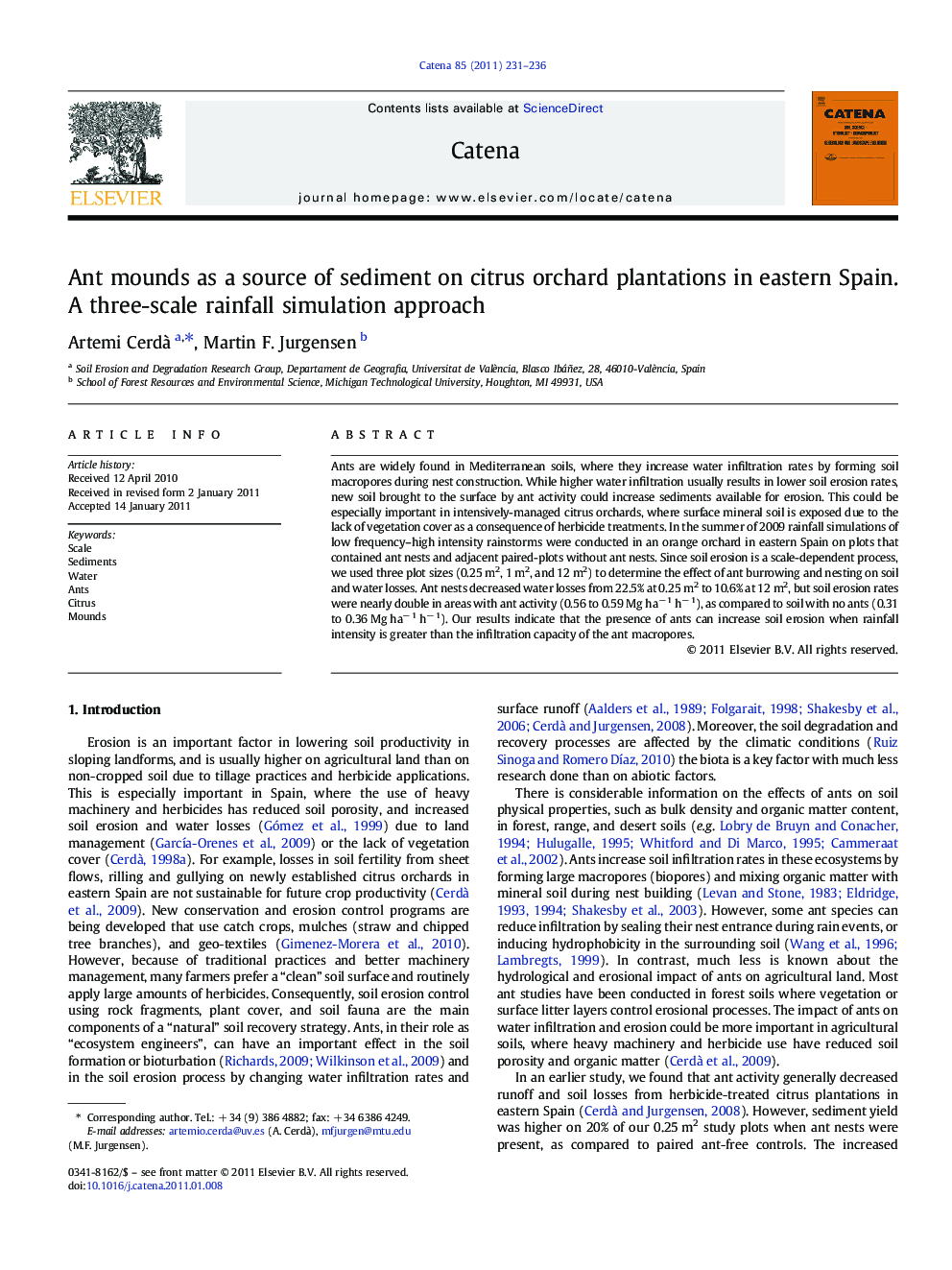| Article ID | Journal | Published Year | Pages | File Type |
|---|---|---|---|---|
| 4571997 | CATENA | 2011 | 6 Pages |
Ants are widely found in Mediterranean soils, where they increase water infiltration rates by forming soil macropores during nest construction. While higher water infiltration usually results in lower soil erosion rates, new soil brought to the surface by ant activity could increase sediments available for erosion. This could be especially important in intensively-managed citrus orchards, where surface mineral soil is exposed due to the lack of vegetation cover as a consequence of herbicide treatments. In the summer of 2009 rainfall simulations of low frequency–high intensity rainstorms were conducted in an orange orchard in eastern Spain on plots that contained ant nests and adjacent paired-plots without ant nests. Since soil erosion is a scale-dependent process, we used three plot sizes (0.25 m2, 1 m2, and 12 m2) to determine the effect of ant burrowing and nesting on soil and water losses. Ant nests decreased water losses from 22.5% at 0.25 m2 to 10.6% at 12 m2, but soil erosion rates were nearly double in areas with ant activity (0.56 to 0.59 Mg ha− 1 h− 1), as compared to soil with no ants (0.31 to 0.36 Mg ha− 1 h− 1). Our results indicate that the presence of ants can increase soil erosion when rainfall intensity is greater than the infiltration capacity of the ant macropores.
